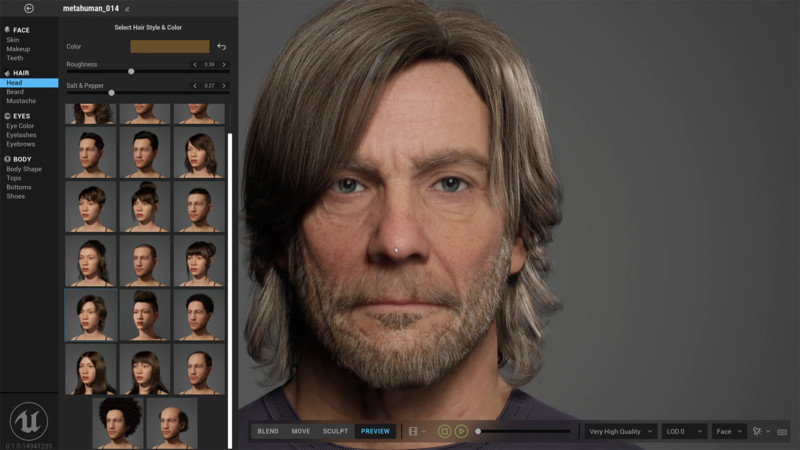MetaHumans Lets You Create Ultra-Realistic Digital Humans in Minutes
It looks like computer-generated digital humans are rapidly exiting the uncanny valley. Just take a look at Unreal Engine’s impressive new MetaHuman Creator, which lets you create photorealistic “fake” people in just minutes.
Unreal Engine has published the above video that is the closest example we’ve seen yet to a demonstration of technology that can depict realistic human faces and bodies to the degree it is very possible to envision a future where this technology looks as real as reality. The company calls it MetaHuman Creator, and it’s slated for release this year.
Below are a few examples of “humans” created with the software:
![]()
![]()
![]()
![]()
For those unfamiliar, Unreal Engine is a real-time 3D graphics creation platform that is owned by Epic Games Studios that is at the core of many video games and has been regularly updated with the times. It was first deployed in 1998 in the first-person shooter game, Unreal (hence its name) but has seen its use branch out across the industry since. What were once crudely depicted landscapes that were riddled with obvious polygons has evolved along with computing power to give us some truly exceptional nearly true-to-life graphics.
While video games have gotten more advanced, even the most technically impressive ones still contain what are obviously computer-generated people. While it is possible studios were going for the most human-like look possible, most gamers haven’t been clamoring for games that actually look like movies or reality. Gameplay is often more important than graphics in the long run, but that hasn’t stopped the developers of the Unreal Engine from continually trying to push the envelope since graphics demonstrations are most often the best way to get eyes on a new video game.

In the published demo, there are a few faces that still give off that uncanny valley effect, but a few others that, when they are not paused and closely examined, look extremely real. Compare these images to what was being made in the Unreal Engine just three years ago below:
That is without question a giant leap in advancement.
Last year, Unreal showed a demonstration that flexed its developer’s work in lighting which, combined with ray tracing, is creating some truly stunning and realistic landscapes.
Combining how completely artificial scenes can look like photographs with true-to-life lighting and reflections is giving artists the ability to create truly realistic looking landscapes.
So what does this mean for photography? For now, camera sets are probably safe, but it’s not clear if that will always be the case. Earlier this year, Shutterstock scooped up 3D-render stock agency TurboSquid for $75 million and a quick perusal of the company’s assets will show that many of the objects that can be purchased and implemented into various 3D scenes are shockingly lifelike.
![]()
I some cases, entire rooms are made up of entirely 3D assets from TurboSquid and look completely real.

The only thing these rooms are missing is people, and if Unreal’s technology continues to evolve at its current pace there is no reason to believe we aren’t just a few short years from seeing scores of completely fictional people filling TurboSquid’s asset library. Someday, and someday very soon, companies may be arguing that they do not need real people for photoshoots at all anymore. It will without a doubt be a genuine topic of conversation.
In the end, many of those companies are going to go with whatever is more affordable.